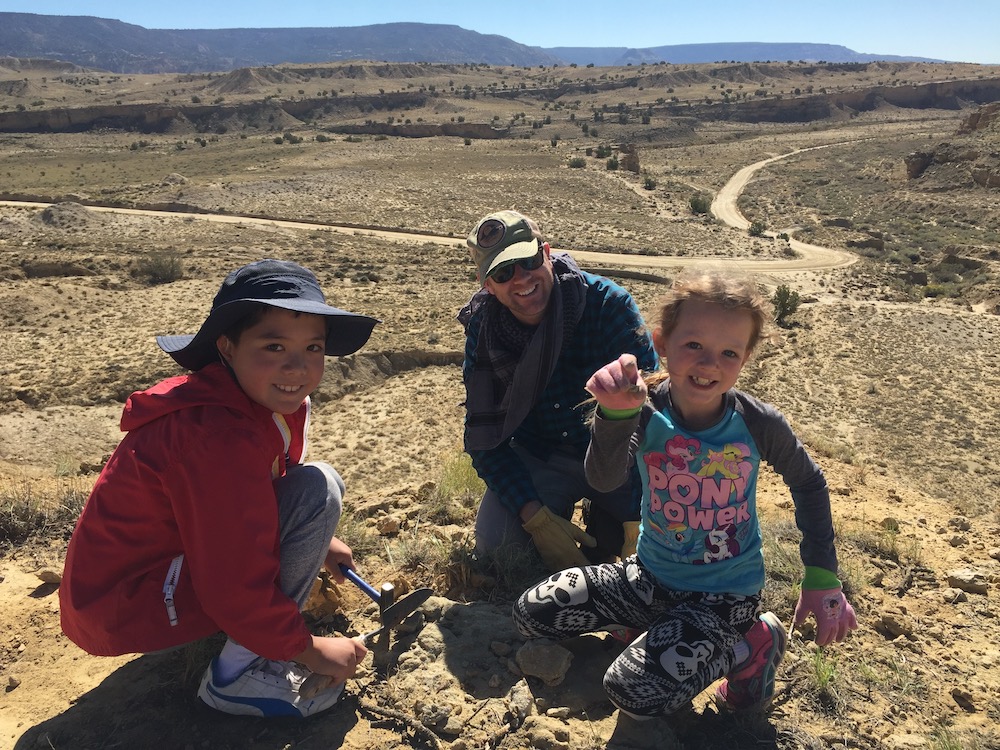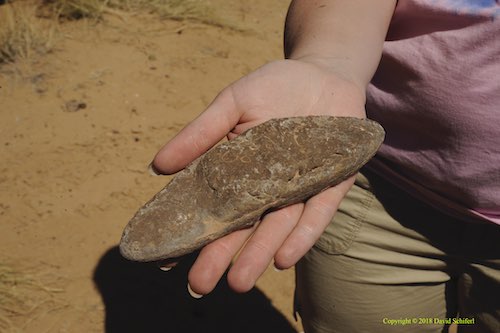
During week nine of Take It Outside, we are learning about our climate!
New Mexico hasn’t always been home to the dry desert and mountainous landscapes that we know today. Did you know that our state was once under water? In our past, ocean creatures and dinosaurs occupied our home!
We can study paleoclimates, the climates that were prevalent in our geological past, to better understand the climates we live in today.
Upcoming Event:
Join PEEC’s Ashleigh Lusher today for our Critter Chronicles live-stream! Ashleigh will introduce Hazel, the Chihuahuan Spotted Whiptail Lizard, via YouTube livestream at 11 AM. She will take questions about Hazel and our critters via the live chat.
This program will last for about 15 minutes, and will also be available to watch on our YouTube channel after the live event. Tune in here.
Blog Post:
PEEC Educator and geologist Siobhan Niklasson explores the paleoclimates of New Mexico in today’s blog post. Learn about the creatures that once roamed — or swam around — the place we now call home.
Craft:

Make a fossil today! This fun, hands-on craft can be made with cold coffee, coffee grounds, flour, and salt. Use toy dinosaurs, shells, or other small objects to make your imprint. You can also try out leaves, sticks, rocks, and other natural materials that you might find in your yard and want to preserve!
If you have a sandbox or sandy area in your yard, you can take the fossils outside once they’ve hardened and have your own paleontological dig! You can also make a small hole in the top of your fossil and hang it up in your house or use it as an ornament.
Find instructions here. The coffee adds a nice color and grittiness to the fossils, but isn’t necessary for this craft. If you don’t have coffee drinkers in your house, here are some coffee-free instructions.
Outdoor Challenge (Beginner):
Go outside and try to imagine our marine past! Read today’s blog post, then pretend you are a creature living in the Western Interior Seaway: maybe a fish, or a shark, or a long-necked plesiosaur. Maybe you are the mighty mosasaur! What do you need to survive? What do you eat? Who might eat you?
Outdoor Challenge (Advanced):
Look for examples of the carbon cycle in action. There are reservoirs where carbon is stored, and processes that move it around. Find out more about processes in the carbon cycle here.
Go outside and look for evidence of the carbon cycle in action. For instance, plants combine carbon dioxide from the atmosphere with water to make sugars and new cells. When animals breathe, each breath moves carbon dioxide from the animal’s cells into the atmosphere. Our volcanic rocks are evidence that materials were moved from rocks out to the atmosphere, and burned forests moved carbon from trees to the atmosphere.
Think of human impacts. How do our activities, fossil fuel use, agriculture, and industry, move carbon?
Other Resources:
- Learn more about geologic history and fossils from the University of California Museum of Paleontology and their fascinating Paleontology Portal.
- Explore the paleontological history of Chaco Culture National Historical Park, which just over 90 miles away from Los Alamos as the crow flies.
- Carbon is found in our atmosphere, in the ocean, in our soil, and in the plants and animals on our Earth. Learn more about the carbon cycle in this video from NASA.
- Explore maps showing how the geography of the Earth has changed since ancient times using Deep Time Maps.
- Would you like to learn more about the fossils that have been found in New Mexico? Check out this edition of our quarterly newsletter Nature Notes for an article by volunteer Marilyn Lisowski on the Coelophysis that was discovered at Ghost Ranch.
- When the PEEC planetarium is open, we have a full dome movie, Sea Monsters, that explores the ecosystem of the Western Interior Seaway. Watch the trailer here.
Share Your Experience:
Tell us what you learn about our climate this week! We’d love to see your photos, too. Please send them to takeitoutside@peecnature.org or share them on Facebook or Instagram with the hashtag #peectakeitoutside.
Join us tomorrow to learn about the future of our climate!
